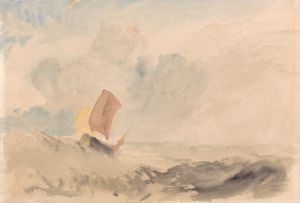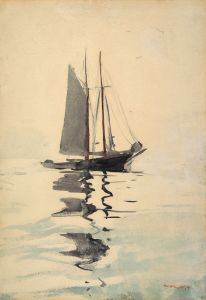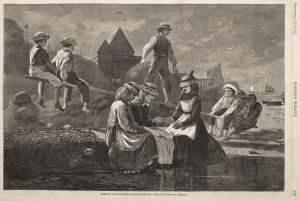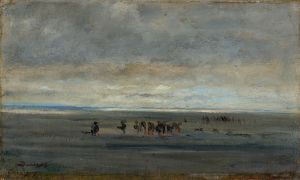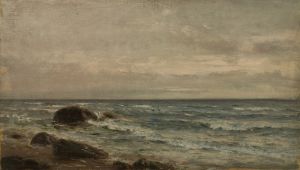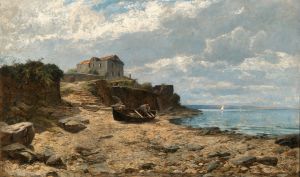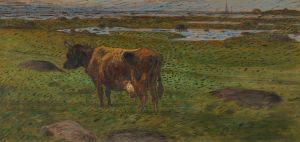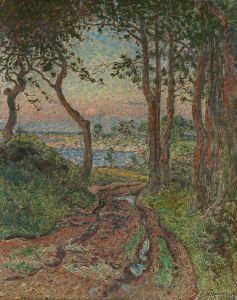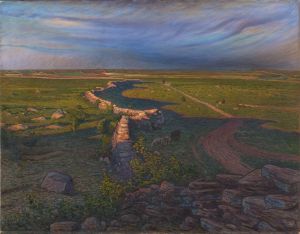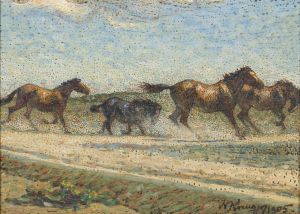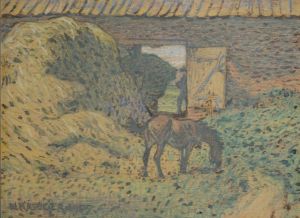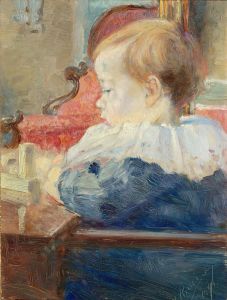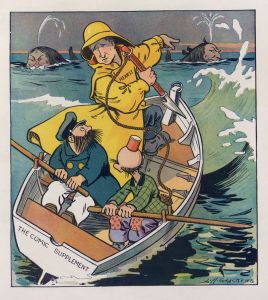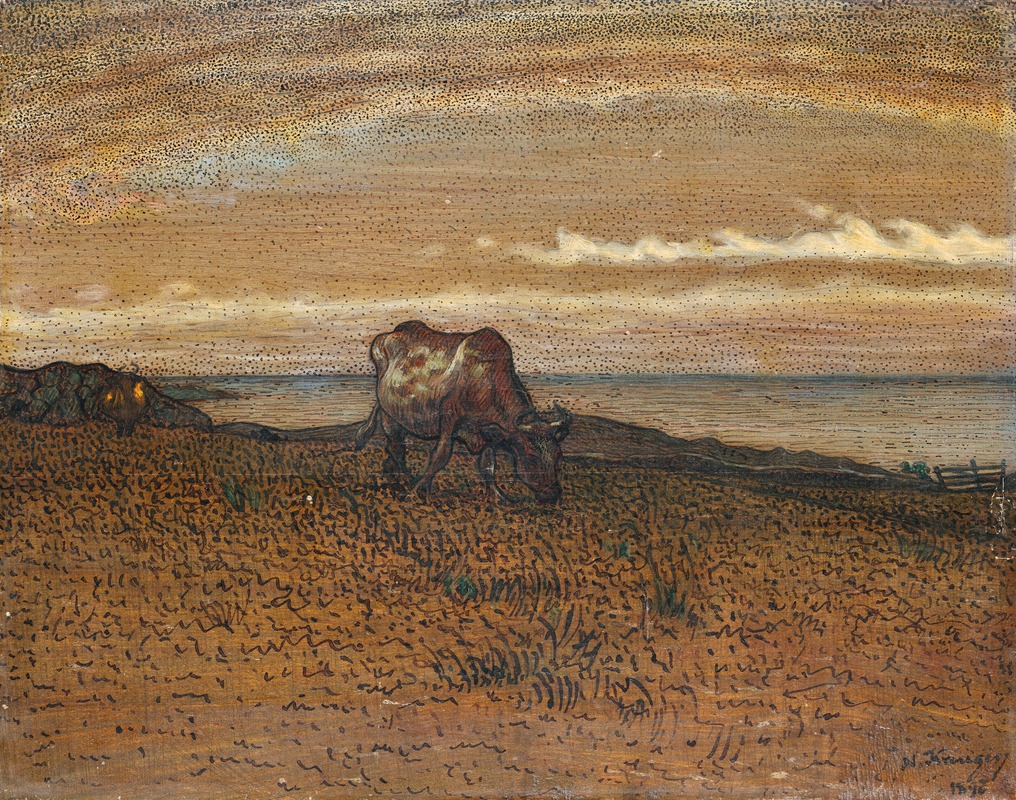
Weide am Meere
A hand-painted replica of Nils Kreuger’s masterpiece Weide am Meere, meticulously crafted by professional artists to capture the true essence of the original. Each piece is created with museum-quality canvas and rare mineral pigments, carefully painted by experienced artists with delicate brushstrokes and rich, layered colors to perfectly recreate the texture of the original artwork. Unlike machine-printed reproductions, this hand-painted version brings the painting to life, infused with the artist’s emotions and skill in every stroke. Whether for personal collection or home decoration, it instantly elevates the artistic atmosphere of any space.
Nils Kreuger was a prominent Swedish painter known for his contributions to the Nordic art scene in the late 19th and early 20th centuries. One of his notable works is "Weide am Meere," which translates to "Pasture by the Sea." This painting exemplifies Kreuger's distinctive style, which often combined elements of realism with a keen interest in capturing the atmospheric qualities of the Swedish landscape.
Born in 1858 in Kalmar, Sweden, Kreuger initially studied at the Royal Swedish Academy of Arts in Stockholm. However, he later moved to Paris, where he was influenced by the Impressionists and the Barbizon School, which emphasized painting en plein air, or outdoors, to capture natural light and atmosphere. This experience significantly shaped his artistic approach, which is evident in "Weide am Meere."
"Weide am Meere" is characterized by its depiction of the serene Swedish coastal landscape. Kreuger had a particular affinity for capturing the unique light and mood of the Nordic environment, often focusing on the interplay between land, sea, and sky. In this painting, he employs a muted color palette, which is typical of his work, to convey the tranquil yet dynamic nature of the scene. The painting likely features a pasture near the sea, with elements such as grazing animals or coastal vegetation, although specific details about the composition are not widely documented.
Kreuger's technique often involved broad, expressive brushstrokes, which can be seen in the way he renders the natural elements in "Weide am Meere." This approach not only highlights his Impressionist influences but also his commitment to capturing the essence of the Swedish landscape. His work is noted for its ability to evoke a sense of place and atmosphere, drawing viewers into the serene yet powerful beauty of nature.
Throughout his career, Kreuger was associated with the Varberg School, a group of Swedish artists who shared a common interest in depicting the natural beauty of Sweden. This group was instrumental in the development of Swedish national romanticism in art, which sought to celebrate the country's landscapes and cultural heritage. Kreuger's work, including "Weide am Meere," played a significant role in this movement, as it reflected a deep appreciation for the Swedish environment and its unique qualities.
In addition to his landscape paintings, Kreuger was also known for his depictions of rural life and agricultural scenes, which often featured animals and human figures. These works further demonstrate his interest in the relationship between people and their natural surroundings, a theme that is subtly present in "Weide am Meere."
Nils Kreuger's legacy as an artist is marked by his ability to capture the spirit of the Swedish landscape with sensitivity and skill. His paintings continue to be celebrated for their atmospheric qualities and their contribution to the development of Swedish art. "Weide am Meere" remains a testament to his talent and his enduring influence on the Nordic art tradition.





